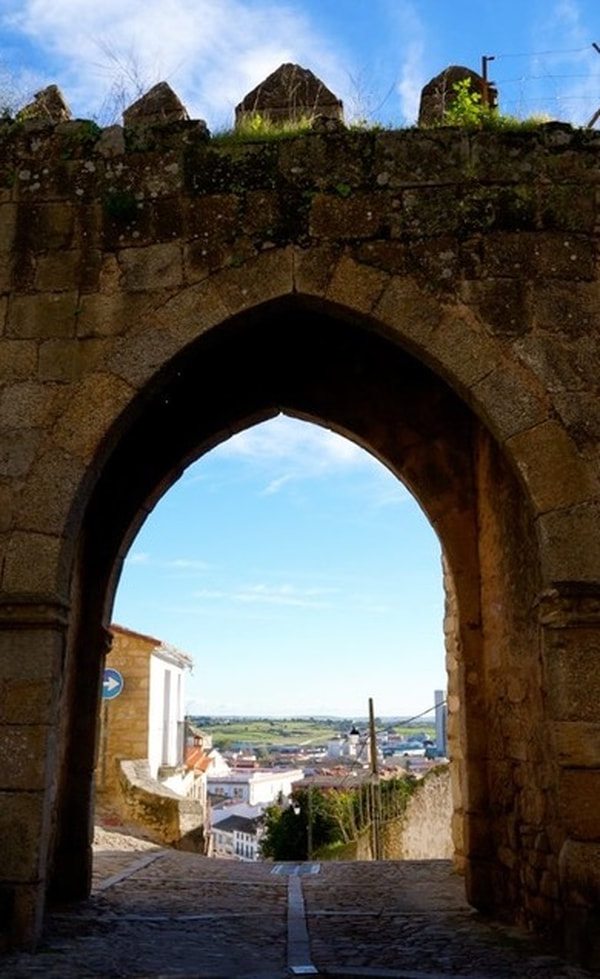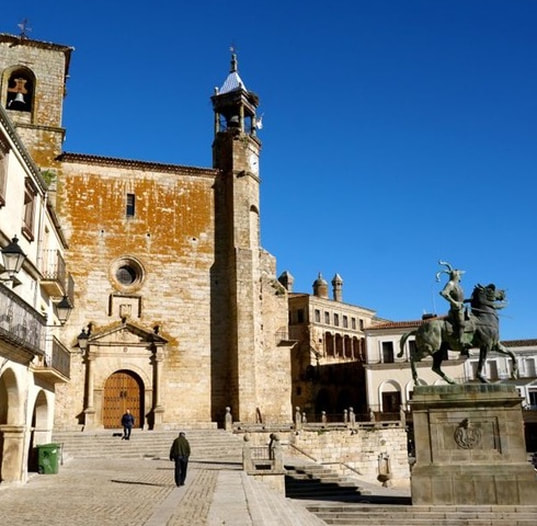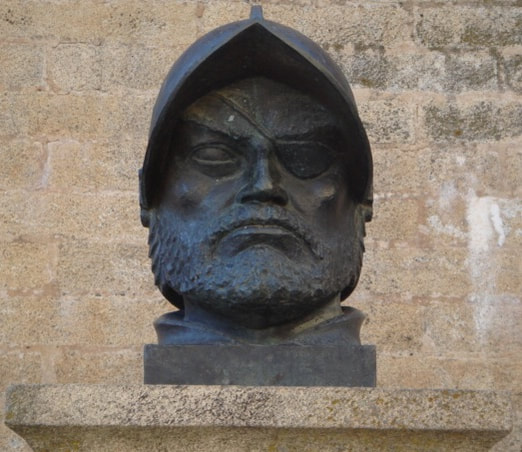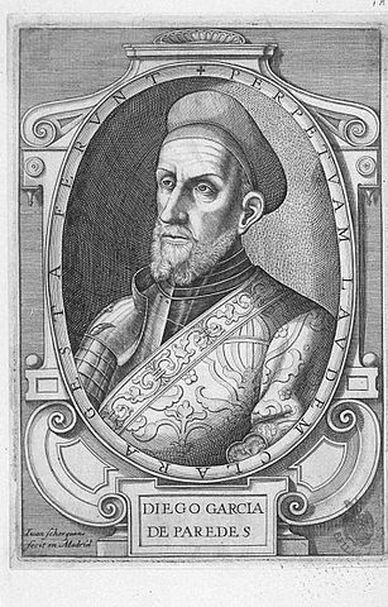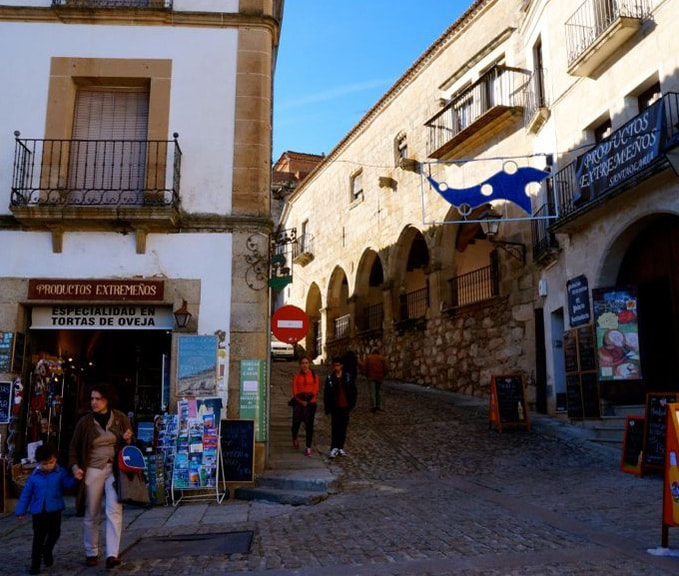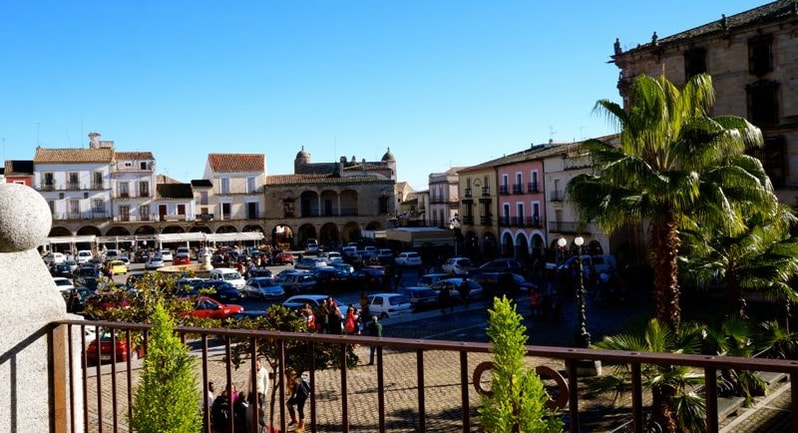- GoGlobalToday
-
Global Destinations
- 13 Tips in Choosing Unique Vacation Destinations
-
Southeast Asia
>
-
Tips for a Meaningful Travel to Vietnam
>
- 13 Interesting Places Not to Miss in Vietnam
- 14 Exciting Things to Do in Hanoi
- 11 Fabulous Things to Buy in Vietnam
-
Hanoi: Discover the Thrilling Adventures Awaiting You
>
- Discovering Hanoi's Hidden Secrets
- Downtown Park in Hanoi
- Pho Sach: Book Street in Hanoi
- Ta Hien and Ma May: Food Streets in Hanoi
- Hoan Kiem Lake: Hanoi's Iconic Landmark
- Unlocking Wisdom's Sanctuary: Exploring Hanoi's Temple of Literature
- The Citadel in Hanoi
- Tea at Dinh Co Vu Temple
- The Street Vendors of Hanoi
- Savouring the Culinary Delights of Hanoi: Where to Eat, Drink and Indulge >
- Street Food in the Heart of Hanoi: A Truly Tasty Adventure
- Honouring the Achievements of Vietnamese Women: Vietnam Women's Museum
- Museum of Ethnology: A Peek at Vietnam's 54 Ethnic Groups
- Vietnam Museum of Ethnology Pictures 1 >
- Vietnam Military History Museum in Hanoi
- Fine Arts Museum of Vietnam
- One Pillar Pagoda: A UNESCO World Heritage Site
- Where to Shop in Hanoi
- Halong Bay, Vietnam
- Dong Ho: Folk Painting Village in Vietnam
- Indigo: Saving Vietnam"s Traditional Handicraft
- Phu Vinh: BambooCraft Village in Vietnam
- Ho Chi Minh Trail
- Hue: The Ancient Imperial Capital of Vietnam
- 9 Things to Enjoy Hoi An in VietNam
- My Son: The Centre of Cham Culture
- Ninh Binh: A Must Do Day Trip from Hanoi
- Pilgrimage to the Perfume Pagoda
- TET: Lunar New Year in Hanoi >
-
Why Visit Cambodia
>
- The Royal Palace of Cambodia
- Where to Shop in Phnom Penh
- 13 Fabulous Items to Buy in Cambodia
- Pich Mkot Temple: An Oasis Outside of Phnom Penh
- Apsara: Cambodia's Traditional Dance
- 8 Things That Make Cambodia Unique >
- The Ancient Secrets of Preah Vihear
- 6 Most Popular Traditional Markets in Phnom Penh Cambodia
- The Streets of Phnom Penh
- Siem Reap, Cambodia: Things to Do Other than Visiting the Temples of Angkor >
- Cool Things to Do in Mondulkiri Cambodia
- Tonle Sap: Cambodia's Environment Hotspot
- Cambodia: A Unique Adventure
- The Unique Taste of Cambodia
- 10 Fascinating Places to Visit in Takeo, Cambodia >
- Things to Know Before Visiting Ratanakiri in Cambodia
- 11 Top Must Do in Myanmar
- Singapore: The Chameleon of Asia
- Cool Things to Do in Luang Prabang Laos
- The Mighty Mekong
- Cruising the Chao Phraya
- Stories of Bargaining in Asia
- Puerto Princesa, Palawan
- The Best of Ilocos Norte, Philippines
- The Best of Ilocos Sur, Philippines
-
Tips for a Meaningful Travel to Vietnam
>
-
Europe
>
- Top Places to Visit in Spain >
-
8 Reasons to Visit Spain
>
- From Royal Stables to a Majestic garden: Jardines de Sabatini
- Puertas de Alcalá and Toledo: Time travels in Madrid
- La Feria del Libro de Madrid 2022 and The Cat Who Saved Books
- A Walk in Loyola
- An Afternoon in El Parque del Oeste Madrid
- The Castle Against Navarra's Sky
- The Sta.Clara Island Lighthouse in San Sebastian, Spain
- San Juan de Gaztelugatxe and its magic
- Olympic Park Barcelona
- Joan Miro Museum in Barcelona
- Top Food to Enjoy in Spain >
- Best Cities to Visit in Portugal >
- 10 Best Places to Visit in Croatia >
- Fun Things to Do in a Day in Kotor Montenegro
- Why is Italy a Premier Destination? >
- Perouges: The Medieval Village in France
- Avenches: The Ancient Roman Capital in Switzerland
- Gruyere: A Postcard Pretty Medieval Town in Switzerland
- Edinburgh
- South Africa >
- Canada >
- South Asia >
- Other Destinations >
-
Global Travel
- 7 Ways to Restore Your Well Being After a Long Flight
- 8 Ways to Prepare for Airline Travel
- Off-Season Travel Challenges: What to Expect When the Crowds Disappear
- The Benefits of Off-Season Travel: Exploring Destinations Beyond the Crowds
- 10 Great Ways to Upgrade Bucket List Tourism into Technicolor Memories
- Feast and Wander: 7 Tips for Foodie Travel
- 11 Reasons Why You Don't Wait Till You Retire to Travel
- 15 Tips to Whisk Through Airport Security
- 8 Tips on How to Make Group Travel Fun
- Travel As A Marinade, Not A Spritzer
- 5 Tips for a Most Satisfying Travel
- 7 Tips to Make Your Travel More Fun
- Road Travel: Top 5 Ways to Engage Kids
- How to Choose Travel Insurance
- When A Guided Vacation is Better
- Solo Travel – Is it For You?
- Travel: A Unique Experience in Life
- 10 Best Insights into Travel
- What You Bring to Your Travel
- Beyond the City Lights: Discovering the Charms of Rural Tourism
- Top Possibilities of Rural Tourism
- 7 Benefits of Rural Tourism
- The Charm of Alleyways
- Strategic Packing: Selecting the Perfect Essentials for Travel Success
-
Global Careers
-
Ever Dreamed of Working in Other Countries?
>
- 10 Steps to a Successful International Assignment
- 7 Things Successful International Consultants Do
- 10 Challenges to Working Internationally
- 7 Benefits of Working Internationally
- International Consulting: 9 Crucial Steps to Success
- Unlocking Success: Essential Skills for International Jobs
- 10 Strategies for Finding International Work Opportunities
- Mastering International Consulting Teamwork: Strategies for Effective Collaboration
- 8 Reasons Why International Consultants Fail
- Fun in Leadership
- 8 Steps to Becoming More Persuasive
- Why Making Conscious Decisions is Key to Personal Development
- 7 Sure Steps to a Successful Career
- 9 Sure Steps to Your Dream Job
- What to Do When You Are in a Wrong Career
- 7 Steps to Build Your Cope with Change Muscles
- 10 Winning Attitudes for a Successful Career Kick-Start
- 6 Ways to Make Risk Taking Easier
- The First Thing You Do When You Find Yourself in a Hole
- Key Steps to Becoming a Good Mentor
- 5 Key Steps to Top Performance
- 7 Sure Steps to Coaching Success
- 7 Key Benefits of Finding a Career Coach
- 13 Tips for Effective Training
- 11 Steps Towards Successfully Working for Yourself >
- 9 Steps to Success in the Global Market
- Bureaucracies: Worldwide Garrottes?
- Mobile: Today's Global Platform
- 7 Key Steps to Grow your Small Business >
-
Ever Dreamed of Working in Other Countries?
>
-
Global Lifestyle
- How Do We Expand our Global Circles and Make them More Inclusive?
- Interconnected Minds, Interwoven World: Exploring Global Consciousness
- Why Have Fun in Learning
- Too Much Information
- 9 Ways of Enjoying Being Offline
- Healthy Eating Is Meant to Be Fun >
- 5 Ways of Managing Stress
- 8 Sign Posts in Finding Your Sense of Purpose
- The Joy of Feeding Birds
- 9 Simple Ways of Making Someone Happy
- What To Do When You're Discouraged
- 7 Easy Steps to a Happy Life
- A Fan of Fans
- The Silence of the Moment
- The Poaching of Rhino Horns
- Football Gets its Critical Mass in Southeast Asia >
- Journey Across Beliefs
Of course, for the young, adventure is what they seek. So, Pizarro and his buddies started running to the sea, knowing the ship would be waiting for them, and off they went to the most extraordinary adventure Europe had to offer at that time: The New World.
Trujillo is a peaceful backwater in Caceres. It was the 16th century. The boys are bored, and the colorfully dressed nobleman comes to the village square and says how about some real adventure?
For the village of Trujillo, the most important thing was that the boys came back with silver and gold and outrageous stories, and the town never recovered.
The boys ticked off the waiting girlfriends when they revealed a line of Inca princesses that made the local cheerleaders look a little shabby.
So, the quiet little town morphed into a beautiful jewel box of a city with Pizarro still grinning at the life he found. The Incas, of course, wished the boys had stayed at home.
The boys ticked off the waiting girlfriends when they revealed a line of Inca princesses that made the local cheerleaders look a little shabby.
So, the quiet little town morphed into a beautiful jewel box of a city with Pizarro still grinning at the life he found. The Incas, of course, wished the boys had stayed at home.
Trujillo Caceres Map
Who are these Trujillo Boys?
The greatest of these Trujillo boys were Francisco Pizzaro, who conquered Peru; Francisco de Orellana, founder of Guayaquil, Ecuador, and the first European to explore the Amazon; Francisco de las Casas, who accompanied Hernan Cortes in his conquest of Mexico, and founded the city of Trujillo in Honduras, Diego Garcia de Paredes, a distinguished warrior and his son of the same name who founded Trujillo and other cities in Venezuela, Nuno de Chaves who founded Santa Cruz de la Sira in Bolivia and so many others whose names are all over South America.
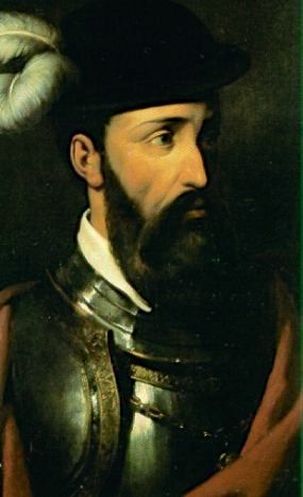 Pizzaro. Source: Wikimedia, Public Domain
Pizzaro. Source: Wikimedia, Public Domain
Francisco Pizzaro. Born in Trujillo, an illegitimate son of an infantry colonel Gonzalo Pizzaro with a poor woman, Francisca Gonzalez, he grew up with no literacy. Hence, he saw the expeditions as his only hope for the future.
In 1509, Pizzaro joined an expedition to the New World, where he got the positions of Mayor and Magistrate in Panama.
But Pizzaro knew of the riches of the Incas and led a successful expedition, killing the Inca King, Atahualpa. He also founded Lima, which he claimed to be his top achievement. Sadly, he died there, but today, Trujillo honors him with a colossal statue in the Plaza Mayor as their most famous son.
In 1509, Pizzaro joined an expedition to the New World, where he got the positions of Mayor and Magistrate in Panama.
But Pizzaro knew of the riches of the Incas and led a successful expedition, killing the Inca King, Atahualpa. He also founded Lima, which he claimed to be his top achievement. Sadly, he died there, but today, Trujillo honors him with a colossal statue in the Plaza Mayor as their most famous son.
Francisco de Orellana, another son of Trujillo, was the first European to complete the navigation of the Amazon River, which was named Rio de Orellana. He also founded Guayaquil, which is now part of Ecuador.
Francisco de las Casas, another native of Trujillo and a cousin of Hernan Cortes, was the one who carried the news of Cortes's appointment as Governor of New Spain. For this, he was awarded the Yanhuitlan as his encomienda.
Here, his wife, Maria de Aguilar, also a cousin of Cortes, started the famous silk industry from the mulberry seeds that Cortes gave. He also founded Trujillo in Honduras.
Francisco de las Casas, another native of Trujillo and a cousin of Hernan Cortes, was the one who carried the news of Cortes's appointment as Governor of New Spain. For this, he was awarded the Yanhuitlan as his encomienda.
Here, his wife, Maria de Aguilar, also a cousin of Cortes, started the famous silk industry from the mulberry seeds that Cortes gave. He also founded Trujillo in Honduras.
Diego Garcia de Paredes is noted for his strength and has distinguished himself in several wars and conquests. A son of the same name founded Trujillo in Venezuela.
Nuno de Chaves founded Santa Cruz de la Sierra in Bolivia.
Nuno de Chaves founded Santa Cruz de la Sierra in Bolivia.
There are a thousand other names from Trujillo, who also served in the various conquests of the New World and whose names are now all over the Americas.
What Was Trujillo Like Before the Conquistadors
The original town of Trujillo, built on a granite ledge on the hillside, offers impressive views of the plains. Celts, Visigoths, Romans, Moors, Jews, and Christians have left their marks on the city.
Established by the Romans around 206 BC, Trujillo is one of the oldest cities in Spain. The Visigoths in 414 ACE, who were at this time already Christians, took over from the Romans.
Established by the Romans around 206 BC, Trujillo is one of the oldest cities in Spain. The Visigoths in 414 ACE, who were at this time already Christians, took over from the Romans.
The Almohads Muslims took over in 714. In 1256, Trujillo was granted sovereignty under the Christian crown. The Jews, also residents in this place together with the Muslims, were given a choice: to convert or leave.
Meanwhile, the Visigothic lords established a tenuous hold over the peninsula. They rewarded Trujillo for its loyal support of Christian forces.
The most notable award was its designation as a regional commerce center in 1465. This change aided Trujillo in building up its traditionally agrarian commerce into a more substantial trade economy.
Meanwhile, the Visigothic lords established a tenuous hold over the peninsula. They rewarded Trujillo for its loyal support of Christian forces.
The most notable award was its designation as a regional commerce center in 1465. This change aided Trujillo in building up its traditionally agrarian commerce into a more substantial trade economy.
What Is Trujillo Like Today?
Today, the city stands in the middle of the Plaza Mayor with a Moorish Castle and palaces, manor houses, and towers, all monuments to the adventurous spirit of Trujillos' young men.
There is the bronze monument to Pizzaro atop his horse in the main square by American artists Mary Harriman and Charles Runse.
From the main square, you can go up steep, narrow streets and explore the corners where these great conquistadors first dreamt of the New World.
There is the bronze monument to Pizzaro atop his horse in the main square by American artists Mary Harriman and Charles Runse.
From the main square, you can go up steep, narrow streets and explore the corners where these great conquistadors first dreamt of the New World.
When you visit, there are some interesting things you can do in Trujillo, Spain:
- Visit the Plaza Mayor: The Plaza Mayor is the main square in Trujillo, and around it are historic buildings, including the 15th-century Town Hall and the 16th-century Palacio de los Duques de San Carlos.
- Visit the Palacio de los Duques de San Carlos: The Palacio de los Duques de San Carlos is a 16th-century palace once the home of the Dukes of San Carlos. The palace is now a museum and houses a collection of art and artifacts from the family's history.
- Visit the Iglesia de Santa María la Mayor: The Iglesia de Santa María la Mayor is a 17th-century church home to several important works of art, including a 16th-century altarpiece by Alonso Berruguete.
- Visit the Museo de Trujillo: The Museo de Trujillo is a museum that houses a collection of artifacts from the city's history, including archaeological finds, religious art, and furniture.
- Visit the Museo de Arte Contemporáneo: The Museo de Arte Contemporáneo is a museum that houses a collection of modern and contemporary art.
- Take a walk through the city's historic center: Trujillo's historic center is a UNESCO World Heritage Site and is home to several landmark buildings, including the 15th-century Plaza Mayor, the 16th-century Palacio de los Duques de San Carlos, and the 17th-century Iglesia de Santa María la Mayor.
- Visit the city's surrounding olive groves and vineyards: Around Trujillo are olive groves and vineyards known for producing olive oil and wine. Visitors can tour the olive groves and vineyards and learn about the process of making olive oil and wine.
- Enjoy the city's nightlife: Trujillo has a lively nightlife scene, with several bars and restaurants. Visitors can enjoy a night in town and sample some of the city's local cuisine.
Also, explore other corners of Spain and its interesting history:
Have you been to Trujillo? What did you enjoy most of your visit? Have you enjoyed your virtual visit to Trujillo? Thank you for the visit and please share in your favourite social media.
